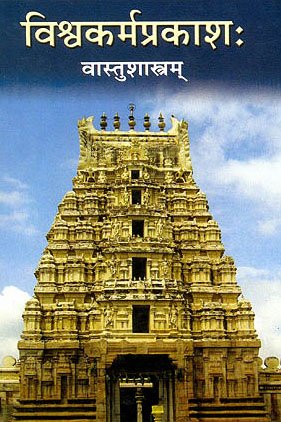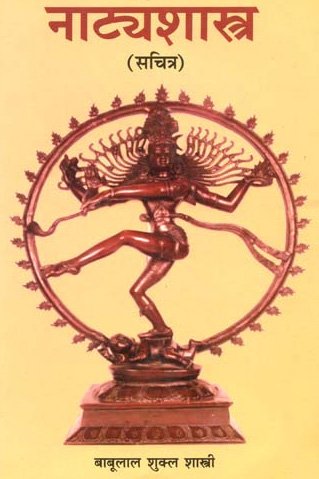Kulira, Kulīra: 16 definitions
Introduction:
Kulira means something in Hinduism, Sanskrit, Buddhism, Pali, Jainism, Prakrit. If you want to know the exact meaning, history, etymology or English translation of this term then check out the descriptions on this page. Add your comment or reference to a book if you want to contribute to this summary article.
In Hinduism
Vastushastra (architecture)
Source: Wisdom Library: Vāstu-śāstraKulīra (कुलीर) corresponds with the Cancer zodiac sign and refers to the fourth of twelve rāśi (zodiacal sign), according to the Mānasāra. Rāśi is one of the three alternative principles, besides the six āyādiṣaḍvarga, used to constitute the “horoscope” of an architectural or iconographic object. Their application is intended to “verify” the measurements of the architectural and iconographic object against the dictates of astrology that lay out the conditions of auspiciousness.
The particular rāśi (e.g., kulīra) of all architectural and iconographic objects (settlement, building, image) must be calculated and ascertained. This process is based on the principle of the remainder. An arithmetical formula to be used in each case is stipulated, which engages one of the basic dimensions of the object (breadth, length, or perimeter/circumference). All twelve rāśis, except the eighth (vṛścika) are auspicious.

Vastushastra (वास्तुशास्त्र, vāstuśāstra) refers to the ancient Indian science (shastra) of architecture (vastu), dealing with topics such architecture, sculpture, town-building, fort building and various other constructions. Vastu also deals with the philosophy of the architectural relation with the cosmic universe.
Natyashastra (theatrics and dramaturgy)
Source: Shodhganga: Elements of Art and Architecture in the Trtiyakhanda of the Visnudharmottarapurana (natya)Kulira (कुलिर) is another name for Karkaṭa (“crab”): one of the thirteen Saṃyuktahastas or “combined hand gestures” (in Indian Dramas), according to the Viṣṇudharmottarapurāṇa, an ancient Sanskrit text which (being encyclopedic in nature) deals with a variety of cultural topics such as arts, architecture, music, grammar and astronomy.—The hasta-mudrās (lit. “hand-gestures”) are very essential to denote some particular action or state in dancing and these mudrās are formed with the help of hands and fingers.—According to the Śabdakalpadruma, karkaṭa means kulira i.e., crab. In karkaṭa-hasta, fingers are passed between the fingers of both hands together and it makes the shape of a crab. This posture is used while yawning. According to Abhinayadarpaṇa, this posture is used to denote coming of a crowd, showing the stomach, filling the conch-shell, twisting limbs, pulling branch etc.

Natyashastra (नाट्यशास्त्र, nāṭyaśāstra) refers to both the ancient Indian tradition (shastra) of performing arts, (natya—theatrics, drama, dance, music), as well as the name of a Sanskrit work dealing with these subjects. It also teaches the rules for composing Dramatic plays (nataka), construction and performance of Theater, and Poetic works (kavya).
Ayurveda (science of life)
Agriculture (Krishi) and Vrikshayurveda (study of Plant life)
Source: Shodhganga: Drumavichitrikarnam—Plant mutagenesis in ancient IndiaKulīra (कुलीर) refers to a “crab”, the bones of which are used by certain bio-organical recipes for plant mutagenesis, according to the Vṛkṣāyurveda by Sūrapāla (1000 CE): an encyclopedic work dealing with the study of trees and the principles of ancient Indian agriculture.—Accordingly, “A stick of the Ferula asafoetida kept at the root of the Musa paradisiaca tree destroys it; the trees of Benincasa hispida, Cucumis melo var. utilissiumus and the like perish if profusely smoked with the bones of crabs (kulīra-asthi)”.

Āyurveda (आयुर्वेद, ayurveda) is a branch of Indian science dealing with medicine, herbalism, taxology, anatomy, surgery, alchemy and related topics. Traditional practice of Āyurveda in ancient India dates back to at least the first millenium BC. Literature is commonly written in Sanskrit using various poetic metres.
Languages of India and abroad
Pali-English dictionary
Source: BuddhaSasana: Concise Pali-English Dictionarykulīra : (m.) a crab.
Source: Sutta: The Pali Text Society's Pali-English DictionaryKulīra, a crab, in kulīra-pādaka “a crab-footer, ” i.e. a (sort of) bedstead Vin. II, 149; IV, 40 (kulira), cp. Bdhgh on latter passage at Vin. IV, 357 (kuḷira° and kuḷiya°): a bedstead with curved or carved legs; esp. when carved to represent animal’s feet (Vin. Texts III, 164). (Page 223)

Pali is the language of the Tipiṭaka, which is the sacred canon of Theravāda Buddhism and contains much of the Buddha’s speech. Closeley related to Sanskrit, both languages are used interchangeably between religions.
Sanskrit dictionary
Source: DDSA: The practical Sanskrit-English dictionaryKulira (कुलिर).—
1) A crab.
2) The 4th sign of the zodiac, Cancer; see कुलीर (kulīra).
Derivable forms: kuliraḥ (कुलिरः), kuliram (कुलिरम्).
--- OR ---
Kulīra (कुलीर).—
1) A crab.
2) The fourth sign of the zodiac, Cancer; कुलीरेऽभ्युदिते रवौ (kulīre'bhyudite ravau) Rām.1.18.15.
Derivable forms: kulīraḥ (कुलीरः).
See also (synonyms): kulīraka.
Source: Cologne Digital Sanskrit Dictionaries: Shabda-Sagara Sanskrit-English DictionaryKulira (कुलिर).—m.
(-raḥ) A crab; also kulīra.
--- OR ---
Kulīra (कुलीर).—mn.
(-raḥ-raṃ) A crab. E. kul to accumulate, and īran affix; also kulira.
Source: Cologne Digital Sanskrit Dictionaries: Benfey Sanskrit-English DictionaryKulīra (कुलीर).—probably borrowed from , m. (and n.), A crab, [Pañcatantra] 265, 9; the sign of the zodiac, Cancer, [Rāmāyaṇa] 1, 19, 8.
Source: Cologne Digital Sanskrit Dictionaries: Cappeller Sanskrit-English DictionaryKulīra (कुलीर).—[masculine] a crab.
Source: Cologne Digital Sanskrit Dictionaries: Monier-Williams Sanskrit-English Dictionary1) Kulira (कुलिर):—for līra q.v., [cf. Lexicographers, esp. such as amarasiṃha, halāyudha, hemacandra, etc.]
2) Kulīra (कुलीर):—m. a crab, [Suśruta; Pañcatantra]
3) the sign of the zodiac Cancer, [Rāmāyaṇa i, 19, 8; Varāha-mihira’s Bṛhajjātaka]
Source: Cologne Digital Sanskrit Dictionaries: Yates Sanskrit-English Dictionary1) Kulira (कुलिर):—(raḥ) 1. m. A crab.
2) Kulīra (कुलीर):—[(raḥ-raṃ)] 1. m. n. A crab.
Source: DDSA: Paia-sadda-mahannavo; a comprehensive Prakrit Hindi dictionary (S)Kulira (कुलिर) in the Sanskrit language is related to the Prakrit words: Kulira, Kulīra.
[Sanskrit to German]
Sanskrit, also spelled संस्कृतम् (saṃskṛtam), is an ancient language of India commonly seen as the grandmother of the Indo-European language family (even English!). Closely allied with Prakrit and Pali, Sanskrit is more exhaustive in both grammar and terms and has the most extensive collection of literature in the world, greatly surpassing its sister-languages Greek and Latin.
Prakrit-English dictionary
Source: DDSA: Paia-sadda-mahannavo; a comprehensive Prakrit Hindi dictionary1) Kulira (कुलिर) in the Prakrit language is related to the Sanskrit word: Kulira.
2) Kulīra (कुलीर) also relates to the Sanskrit word: Kulīra.
Prakrit is an ancient language closely associated with both Pali and Sanskrit. Jain literature is often composed in this language or sub-dialects, such as the Agamas and their commentaries which are written in Ardhamagadhi and Maharashtri Prakrit. The earliest extant texts can be dated to as early as the 4th century BCE although core portions might be older.
Kannada-English dictionary
Source: Alar: Kannada-English corpusKulīra (ಕುಲೀರ):—
1) [noun] any of various decapods with four pairs of legs, one pair of pincers, a flattish shell, and a short, broad abdomen folded under its thorax ; a crab.
2) [noun] the fourth sign of the zodiac, entered by the sun about June 21; the Cancer.
--- OR ---
Kuḷīra (ಕುಳೀರ):—
1) [noun] any of various decapods with four pairs of legs, one pair of pincers, a flattish shell, and a short, broad abdomen folded under its thorax ; a crab.
2) [noun] the fourth sign of the zodiac, entered by the sun about June 21; the Cancer.
Kannada is a Dravidian language (as opposed to the Indo-European language family) mainly spoken in the southwestern region of India.
See also (Relevant definitions)
Starts with: Kulirad, Kuliraka, Kuliram, Kuliramamdira, Kuliranokku, Kulirapada, Kulirashringi, Kulirasthi, Kulirataila, Kuliravai, Kuliravishanika.
Ends with: Kaikulira, Veyyirkulira.
Full-text (+2): Kuliraka, Kulirashringi, Kuliram, Kaulira, Kulirad, Kuliravishanika, Kuliramamdira, Dvidhagati, Crab bone, Kuliru, Crab, Manca, Twisting, Conch-shell, Rashi, Pulling, Stomach, Crowd, Karkata, Saṃdaṃśa.
Relevant text
Search found 10 books and stories containing Kulira, Kulīra, Kuḷīra; (plurals include: Kuliras, Kulīras, Kuḷīras). You can also click to the full overview containing English textual excerpts. Below are direct links for the most relevant articles:
Amarakoshodghatana of Kshirasvamin (study) (by A. Yamuna Devi)
Fauna (7): Aquatic Animals < [Chapter 5 - Aspects of Nature]
Significance of the Moon in Ancient Civilizations (by Radhakrishnan. P)
12. Symbolic Crab and Moon < [Chapter 7 - Moon the Significant Planet of Mind]
Vinaya (3): The Cullavagga (by T. W. Rhys Davids)
Cullavagga, Khandaka 6, Chapter 2 < [Khandaka 6 - On Dwellings and Furniture]
Manusmriti with the Commentary of Medhatithi (by Ganganatha Jha)
Verse 5.15 < [Section II - Objectionable Food]
Rasa Jala Nidhi, vol 1: Initiation, Mercury and Laboratory (by Bhudeb Mookerjee)
Part 4 - The Rasalinga or Rasalingam (Phallus made of Mercury) < [Chapter I - Requisites for metallurgical operations]
The Markandeya Purana (by Frederick Eden Pargiter)